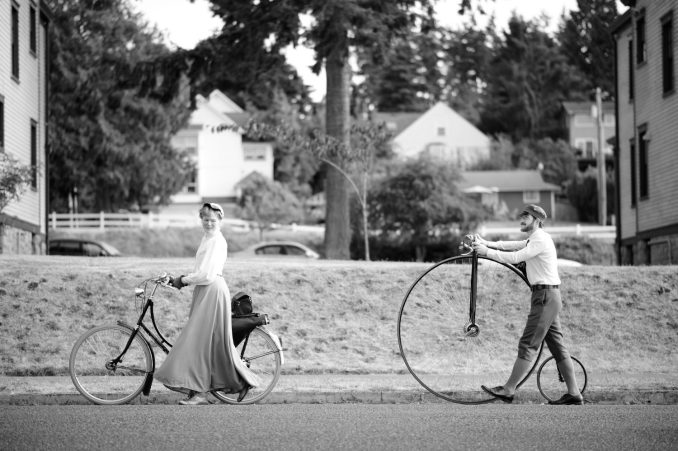E-Newsletter Signup
For special offers, updates and news of new products join our newsletter.
- Also in Blogs
- Sustainable Camping: Preserving Nature for Future Generations
- Embracing the Renewal of Spring: Camping Adventures Await.
- Beating The Winter Blues!
- The History of Cycling
- Senior Camping: Young at Heart
- View all posts in this category >>
GUEST BLOGGER
If you would like to contribute to our blog as a guest and can bring fresh outdoor experiences, please:
The History of Cycling
Posted in Blogs on 23rd October 2023
People in the UK certainly love cycling, with a massive ten million of us riding a bike regularly for leisure, sport, commuting or travel. The greatest number of cyclists are in England, where 7.4 million people hit the road on two wheels at least once a week, according to the National Travel Survey.
Brits cycled a total of 4.2 billion miles during the past year, equating to around 420 miles per person! In fact, the number of cyclists on the roads and the miles travelled have almost doubled in the past 30 years.

© Estar/ Shutterstock.com
Data published by Cycling UK has revealed a steady upward trend for the past three decades. Bike riding boomed significantly during the Covid pandemic in 2020, when people wanted to keep fit during the lockdowns.
Today, the British public have continued taking off their cycling bike cover and embracing the great outdoors. Around 20 million people in the UK own a bicycle for travel, sport and leisure purposes.
History of cycling
Scottish blacksmith Kirkpatrick Macmillan of Dumfries is generally credited with inventing the prototype of the bicycle in 1839. With wooden wheels with iron rims, it was rather a bumpy ride!
It didn’t have the modern type of pedals. Instead, it was propelled by a treadle system that had been used since the Middle Ages for other purposes, including machinery before the advent of electricity.
Macmillan’s invention became known as the velocipede.
The first bicycle with modern pedals was invented in the 1860s by Pierre Lallement, of Pont-à-Mousson, France. He came up with the idea while he was employed making baby carriages. His design is used as the basis for today’s modern bikes.
On 31st May 1968, the first official men’s cycle race took place, with a 1,200-metre dash between the entrance of Saint-Cloud Park near Paris and the fountains. It was won by 18-year-old Englishman James Moore, who had emigrated to Paris.
The famous penny farthing bike was designed by British engineer and inventor James Starley, of Albourne, in 1871. He perfected the different gears system and the bicycle chain drive.
Scots-born inventor John Boyd Dunlop developed the first pneumatic rubber tyre in 1887 for his son’s tricycle, which he patented the following year. His design was incorporated into future bikes.
By the 1930s, the UK had 300 miles of cycleways. Sadly, many of them fell into disuse and vanished over the years. In 2018, enthusiasts started a campaign to renovate them due to the boom in the popularity of cycling.
The first Cycle Proficiency Test took place in 1947 for kids aged under seven. Nine years later, the official Cycle Proficiency Scheme was launched to help children stay safe on their bicycle.
In 1959, the British Cycling organisation was founded when the British League of Racing Cyclists and the National Cyclists’ Union combined.
In 1974, the annual Tour de France international race first took place – televised in 1980. Initially only for men, the first women’s one day event was held in 1989.
Mountain biking became an official sport in 1990.
In 2005, research revealed 80% of kids in Britain owned a bike. The famous London bicycle sharing scheme, nicknamed “Boris Bikes” after the then mayor Boris Johnson, was launched in 2010. More than 17 million journeys have been made on them since.
Cycling benefits
There are different types of cycling, such as road and mountain biking, for people of all health and fitness levels. Mountain biking is generally thought of as the more energetic of the two, aimed at cyclists with higher fitness levels. General rule of thumb: you can ride a mountain bike on ordinary concrete roads, but you shouldn’t take a road bike on rough terrain such as dirt roads, trails, gravel paths, or any other rugged routes.
The main cycling benefits include its positive impact on our physical and mental health. An ideal cardio fitness activity, it can help reduce the risks of heart attacks, strokes, obesity, diabetes and arthritis.
A great way of combating depression, stress, anxiety and other mental health conditions, as a result of the exercise itself, which pumps up our endorphins (the brain’s “feel good” neurotransmitters), this is combined with the sheer joy of riding a bike outdoors.
Take a cycling break
It’s easy and inexpensive to take a short cycling break in the countryside at this time of year.
Take advantage of the current mild weather by fixing a cycling bike rack onto your car and setting off for a long weekend. You can also use metal rails to safely attach your cycle to a motorhome in transit. Don’t forget the bike security straps or padlocks to keep your cycle secure wherever you park it!



